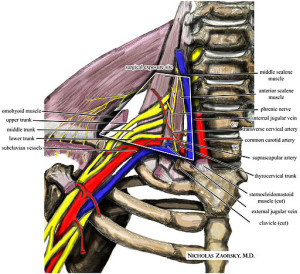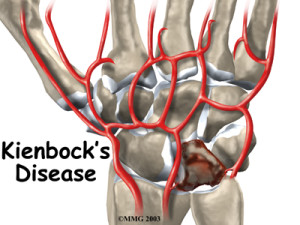Now, we have discussed Arnold Schwarzenegger on this site before, in a post about the psychology of sports injury and physiotherapy. However, it seems that man was quite the insightful gentleman. In his text The Encyclopedia of Modern Bodybuilding Arnold discusses the mind to muscle connection and the importance of not just lifting a weight up and down, but having your “mind in the muscle”. This article will discuss new research into conscious correction of scapular position.
Those in the world of sports physiotherapy would be aware of the frequency with which we encounter episodes of patellar instability. Whilst much research is performed in the adult population, it is important to recognise patellar dislocation as one of the most common acute knee injuries in children. Accordingly, this article will discuss new research into the predictors of patellofemoral joint instability in the adolescent and paediatric populations.
Introduction The condition discussed in this article, you will come to find, is quite complex and can be a battle for the physiotherapist and physical therapist. Thoracic outlet syndrome is considered to be a collection of quite diverse syndromes rather than a single entity (Yanaka et al., 2004), and therefore, accurate diagnosis and enlightened treatment […]
Kienbock’s Disease is a rare and infrequently discussed source of wrist pain that you could definitely encounter in your clinical practice. The condition is named after the Viennese radiologist Robert Kienbock who presented his findings on the disorder in his 1910 publication ‘Concerning traumatic malacia of the lunate and its consequences’. This condition, discussed in depth below, primarily affects people between 15 and 40 years old and has been documented in athletes from many sports that include repetitive use of the wrist e.g. golf, tennis, martial arts, etc . Therefore, if you work with athletes from these sports, you should remain on high alert for the occurrence of Kienbock’s disease.
Any physiotherapist working with academy footballers will know that these players are at risk of overuse injuries due to their immature musculoskeletal systems (1). However, it is imperative that therapists can confidently identify when the players require a therapeutic intervention rather than dismissing their symptoms as ‘growing pains’. It has been found that 5% of all injuries in football academies are due to overuse (1), as some young footballers will partake in high volumes of physical activity. This article will discuss the evidence based management of Osgood-Schlatters condition.
As most sports physiotherapists would know, injuries of the groin are very common. This is particularly true in sports that require lateral movements and kicking; think football, rugby and AFL. In fact in some sports the incidence of groin pain is as high as 13%. This means that we are regularly assessing groin pathologies, and should be aware of the most effective and reliable techniques to assess deficits in adductor function. This article will discuss new research on the Adductor Squeeze Test that can inform and improve your clinical practice…
The sports physiotherapists reading this would be aware of the challenge of accurate diagnosis of hip pathology. The hip/groin area is an area with incredibly complex anatomy and biomechanics (Feeley et al., 2008). To quote a former anatomy lecturer of mine; “It is real tiger country!”. This means to improve clinical reasoning and diagnosis clinicians (and/or diagnosticians) must be acutely aware of the diagnostic accuracy of the clinical tests in their arsenal.
To explain the importance of knowledge about these conditions I will frequently tell you how common these ligament injuries are. Well, it has been suggested that up to 37% of all patients with knee haemarthroses have an associated PCL injury. Furthermore, the incidence of injury is particularly high in sports that involve heavy contact. That means that sports physiotherapists that are involved in the management of athletes from contact sports need to be aware of the evidence based assessment and management of these ligament injuries.
The majority of the sports physiotherapists reading this will know the incredible frequency with which we treat athletes with patellofemoral pain syndrome. There is a good reason for this, it is the most commonly reported injury sustained by runners (Taunton et al., 2002). Whilst the mainstays of treatment have previously focussed solely on the patellofemoral joint, we are seeing more research identifying the importance of the assessing the other components of the kinetic chain.This article will discuss new research on the impact of real time gait retraining for patellofemoral pain syndrome…
In this episode of the podcast I interview Rod Whiteley. Dr Rod Whiteley (FACP) is a Specialist Sports Physiotherapist, and has extensive experience working with elite sportsand has consulted with the Australian Baseball Federation and the Australian Institute of Sport. He is widely published in peer review journals on the topic of the throwing shoulder.
In the past this site has featured some lighter, colloquial blog posts. These articles discuss issues related to the greater physiotherapy community. Thus, I present a few mantras I have heard, adapted or made up for the physios to live by in the coming year.
Radial tunnel syndrome is rare, it is challenging to differentially diagnose and can be a monster to manage. If you have a recalcitrant case of tennis elbow then this post will interest you! This article discusses the best available evidence for assessment and management of radial tunnel syndrome.








